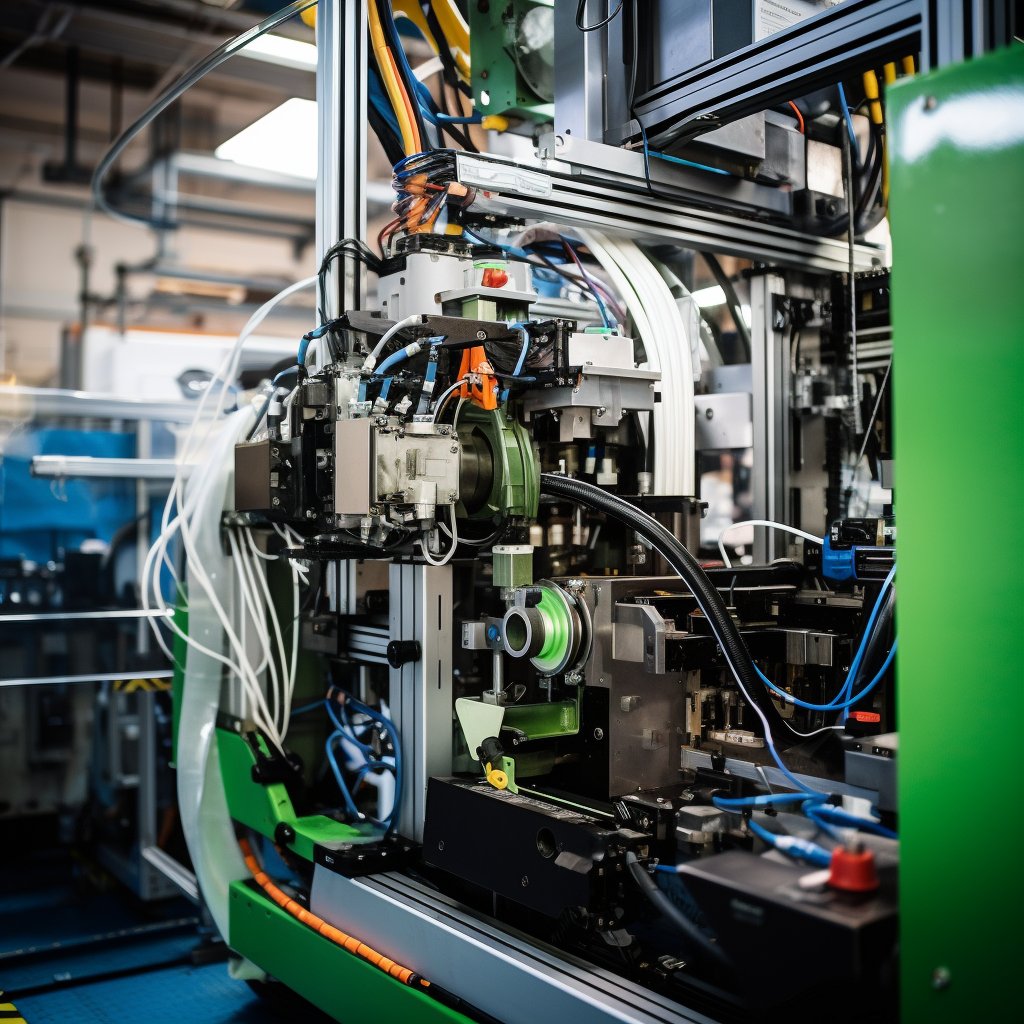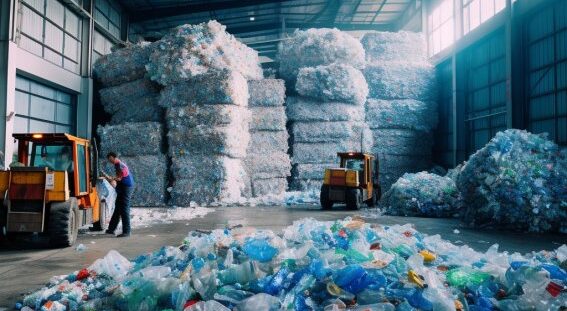Polyethylene Terephthalate, commonly known as PET, is a versatile and widely-used plastic material that has become essential to modern life. PET can be found in a wide range of products and applications, from beverage bottles to clothing fibres. However, with increased awareness of the impact of plastics on the environment, there has been growing interest in the sustainability of PET and its alternatives.
The development of PET can be traced back to the mid-1940s when researchers at the DuPont Company began investigating the properties of polyesters. However, it was in the 1970s that PET became widely used in the manufacturing of bottles and containers. Today, PET is one of the most commonly used plastics in the world, with an annual production of over 70 million metric tons.

Definition:
PET is a type of polyester that is produced through the reaction of terephthalic acid with ethylene glycol. The resulting material is a clear, strong, and lightweight plastic commonly used in manufacturing bottles, containers, and packaging materials.
Material Properties:
PET has several fundamental properties that make it an attractive material for industrial and consumer applications. These properties include:
- High strength and durability
- Lightweight
- Transparent and glossy appearance
- Excellent resistance to moisture and chemicals
- Good electrical insulation properties
- It can be easily recycled
Industrial Usage:
PET is used in a wide variety of industrial applications, including:
- Bottles and containers for beverages, food, and personal care products
- Packaging materials, such as films and sheets
- Fibres for textiles and carpets
- Electrical and electronic components, such as insulation and circuit boards
Application Areas:
PET is used in a range of consumer products, including:
- Bottled water and soft drinks
- Food containers, such as jars and trays
- Personal care products, such as shampoo and lotion bottles
- Clothing and textiles, such as polyester fibres used in clothing and carpets
- Electronic devices, such as computers and mobile phones
Consumer Product Examples:
- Beverage PET bottles: Coca-Cola™ followed by other consumer brands introduced PET beverage bottles in the 1970s, which quickly became popular due to their durability, lightweight, and easy handling.
- PET food containers: PET is widely used in the manufacturing of food containers, such as jars and trays, due to its excellent resistance to moisture and chemicals.
- PET fibres: PET fibres are commonly used in the manufacturing of textiles and carpets due to their strength, durability, and resistance to wear and tear.

Recycling:
PET is a highly recyclable material, and recycling efforts have been increasing in recent years. Recycled PET, or rPET, is used in the manufacturing of a range of products, including new bottles and containers, clothing, and carpet fibres. PET recycling helps reduce waste and conserve natural resources, making it a sustainable option for many industrial and consumer applications.
PET is highly recyclable and can be reused in various applications, including manufacturing new bottles and containers, fibres for textiles and carpets, and packaging materials. Recycling PET is an important aspect of sustainability efforts in the plastics industry, as it helps to reduce waste and conserve natural resources.
PET is a highly recyclable material, and the recycling process can be broken down into several steps:
- Collection: PET products, such as bottles and containers, are collected from consumers or recycling centres.
- Sorting: The collected PET products are sorted by colour and resin type to ensure that only PET materials are recycled.
- Cleaning: The PET products are washed and cleaned to remove any impurities, such as labels or caps.
- Shredding: PET products are shredded into small pieces or flakes, which can then be used to produce new products.
- Reprocessing: The PET flakes are melted down and reprocessed into new products, such as bottles, containers, and fibres for textiles and carpets.
Advantages of PET Recycling:
- Reduces Waste: Recycling PET helps to reduce waste and conserve natural resources.
- Energy Savings: The production of new PET products from recycled materials requires less energy than the production of new PET from raw materials.
- Cost Savings: Recycling of PET can be less expensive than producing new PET from raw materials, which can lead to cost savings for companies.
- Environmental Benefits: Recycling of PET can help to reduce greenhouse gas emissions, as well as air and water pollution.
Disadvantages of PET Recycling:
- Contamination: Contamination of PET products can occur during the collection and sorting process, which can reduce the quality of the recycled material.
- Limited Applications: Recycled PET may not be suitable for all applications, as it may have different properties than new PET.
- Energy Intensive: The recycling process can be energy-intensive, which can offset some of the environmental benefits of recycling.
Environmental and Global Impact:
PET recycling has a positive environmental impact, as it helps to reduce waste and conserve natural resources. In addition, the use of recycled PET can help to reduce greenhouse gas emissions and air and water pollution. The global impact of PET recycling is significant as the demand for sustainable and environmentally-friendly products continues to increase. However, there are still challenges in the PET recycling industry, such as contamination and limited applications for recycled PET. To address these challenges, companies and governments are investing in research and development to improve the efficiency and effectiveness of PET recycling.
Market Price Developments:
The market price of PET can fluctuate due to a variety of factors, including changes in supply and demand, raw material costs, and environmental regulations. In recent years, there has been an increasing demand for recycled PET, which has led to a rise in its market price. However, fluctuations in the global economy and changes in consumer behaviour can also impact the market price of PET.
Future Market Prognosis:
The demand for PET is expected to continue to grow in the coming years, driven by increasing demand for sustainable and lightweight materials. The use of recycled PET is also expected to increase as companies seek to reduce their environmental impact and meet sustainability goals. However, there may be challenges in the PET market, including increased competition from alternative materials and potential regulatory changes that could impact the industry. Overall, the future market prognosis for PET is positive, but companies will need to adapt to changing market conditions to remain competitive.
Polyethylene Terephthalate: A recycling success:
Polyethylene Terephthalate (PET) is a highly versatile and widely-used plastic material that has become essential to modern life. However, with the increasing concern over the environmental impact of plastics, there has been a growing interest in the sustainability of PET and its alternatives. Our article has explored the history, properties, industrial usage, application areas, and recycling of PET, as well as its advantages and disadvantages compared to alternative plastics. We have also examined PET market price developments and future market prognosis, highlighting its global impact on the plastics and recycling industries.
As individuals, we can make a difference by adopting sustainable practices, such as reducing our plastic consumption, properly disposing of PET products, and supporting recycling initiatives. For companies, investing in research and development to improve the efficiency and effectiveness of PET recycling can help to address the challenges in the PET recycling industry and promote sustainable practices.
While there are still challenges to overcome, the future of PET looks promising as companies and governments continue to invest in research and development to improve the sustainability and efficiency of PET production and recycling. Together, we can work towards a more sustainable future for PET and the plastics industry as a whole.







